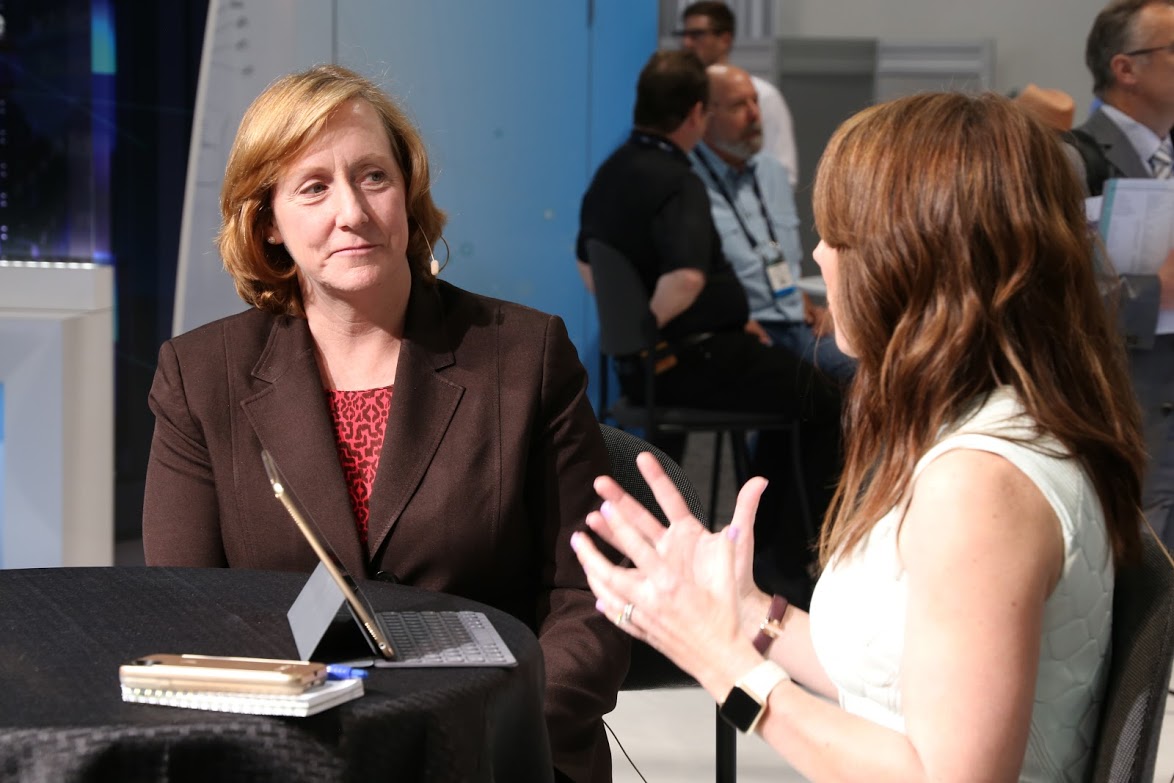 WOMEN IN TECH
WOMEN IN TECH
 WOMEN IN TECH
WOMEN IN TECH
 WOMEN IN TECH
WOMEN IN TECH
Netflix and other movie theater alternatives are now millennials’ preferred movie-viewing experience. For studios to compete in these new channels, they must deliver more than a 90-minute reel, according to Joan Wrabetz (pictured), vice president of marketing at HGST Inc., a subsidiary of Western Digital Corp.
“They recognize that they have this core content. They have to deliver it in a very different set of ways,” she said. Namely, these new ways must be interactive, since high-end PC gaming and other techy pastimes appeal more to young people. Virtual reality is not a format for theaters, but it looks like a good extra for filmmakers to add to their movies, Wrabetz added.
Wrabetz spoke with Lisa Martin (@Luccazara), co-host of theCUBE, SiliconANGLE Media’s mobile live streaming studio, during this week’s NAB Show in Las Vegas. (* Disclosure below.)
A chief technology officer at a major studio told Wrabetz about having to go back and re-shoot a ballroom dance scene with 250 extras for four hours after realizing that it would make a good VR scene. “Too bad you don’t keep your dailies, you would have had that scene,” replied Wrabetz. (Dailies are cut footage from a day’s filming.)
The reason filmmakers throw out footage is because it’s expensive to store. This is why they need to start strategizing about what material and processes they need to deliver the new interactive experiences viewers want, Wrabetz explained.
Sending a process to the cloud is usually the cheapest option, but unfortunately the data has to go with it. “It’s not expensive to keep data in the cloud, but it’s very expensive if you touch it and move it,” she said.
This is where a hybrid solution can be of value to moviemakers, because they can take advantage of the cheapest on-prem storage possible, without missing out on the superior processing power of the cloud, Wrabetz explained.
“Hybrid workflows are about moving the processing around, but not necessarily having to move all the data around and keeping the data secure,” she said.
Saving data ensures movie studios have material on hand with which to make extras and interactive features for later release, Wrabetz added. This is part a trend of filmmakers adapting to new media consumption models.
“They’re all moving from a somewhat defensive to a very offensive strategy with digital assets. They have to or they’ll be out of business,” she said.
Watch the complete video interview below, and be sure to check out more of SiliconANGLE’s and theCUBE’s independent editorial coverage of the NAB Show. (* Disclosure: Western Digital is sponsoring theCUBE’s coverage at the show. Neither Western Digital nor other sponsors have editorial influence on content on theCUBE or SiliconANGLE.)
Support our mission to keep content open and free by engaging with theCUBE community. Join theCUBE’s Alumni Trust Network, where technology leaders connect, share intelligence and create opportunities.
Founded by tech visionaries John Furrier and Dave Vellante, SiliconANGLE Media has built a dynamic ecosystem of industry-leading digital media brands that reach 15+ million elite tech professionals. Our new proprietary theCUBE AI Video Cloud is breaking ground in audience interaction, leveraging theCUBEai.com neural network to help technology companies make data-driven decisions and stay at the forefront of industry conversations.